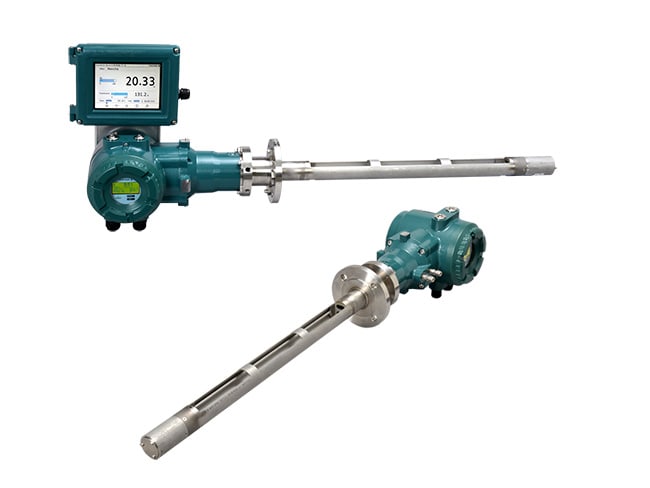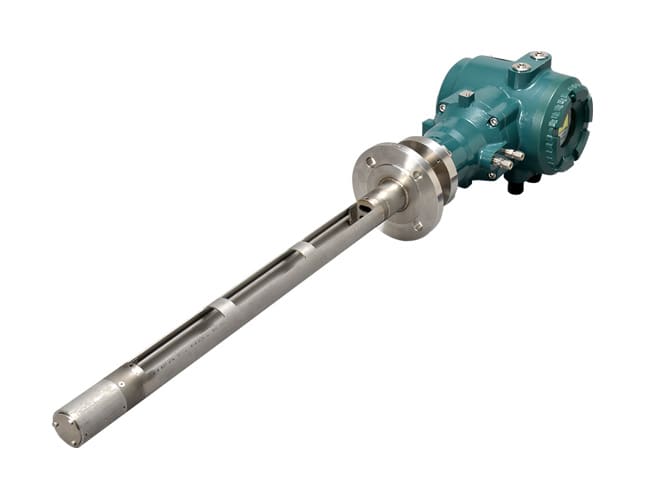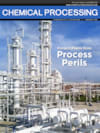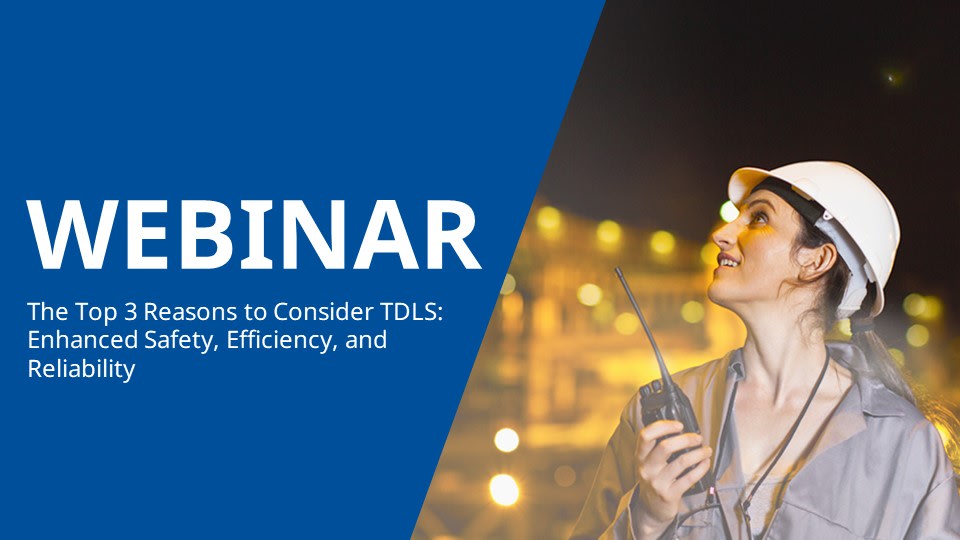The TDLS Probe brings all the industry-leading combustion features into a single-flange explosion-proof device for measuring oxygen, CO, and methane. Whether it's being used for oxygen trim control, CO monitoring, high combustible fuel runback control, or even a SIL2-rated startup permissive for methane, the TDLS Probe Type is capable of providing measurements for all of these functions in a single device.
Features and Benefits
Reduced Installation and Maintenance Costs
-
Single-flange design allows for installations where cross-duct TDLS technology was not feasible due to obstructions or accessibility issues
-
Capability to make O2 + CO/CH4 Measurements with a single device up to 850°C
-
Onboard diagnostics with 50 days of data and spectral storage ensure that minor issues can be identified before they become more serious problems
-
Explosionproof/flameproof for installation in CID1/Z1 or CID2/Z2 areas
-
HART and Modbus TCP come standard to maximize remote diagnostics and configuration capabilities with a single cable run
Reliability
-
Reference Cell
Internal reference cell in the laser/detector module ensures peak locking -
Auto-gain
Auto-gain enables a wide signal range during dynamic process events
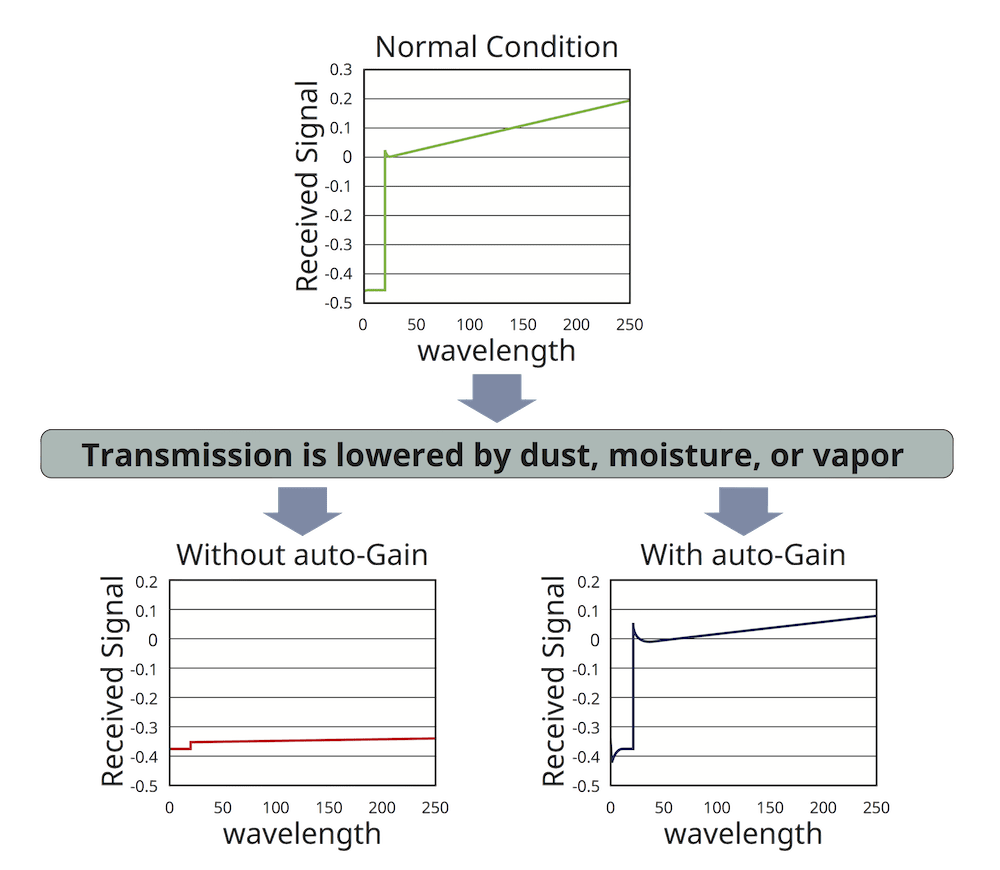
- Validation
Initiated manually, remotely, or automatically on a daily, weekly or monthly basis defined by the user - SIL2 Certified
IEC61508 SIL designed & approved, SIL2 capability for single analyzer use, SIL3 capability for dual analyzer use.
System Configuration
Standard Configuration with Remote YH8000 HMI
-
Connect up to 4 analyzers simultaneously
-
Can be used with TDLS8000 and/or TDLS8100/8200 probe

Standard Configuration with DTM/DD Devices
-
Connectable with FieldMate or other DTM/DD compatible device management software using HART communication.

-
Mini Display on Analyzer Head

Seamless User Interface
Intuitive 7.5 inch color LCD Touch Screen
-
Straightforward Operation
-
Displays all configuration settings and trend information
-
Eliminates the need for a separate maintenance PC
-
Can be installed remotely
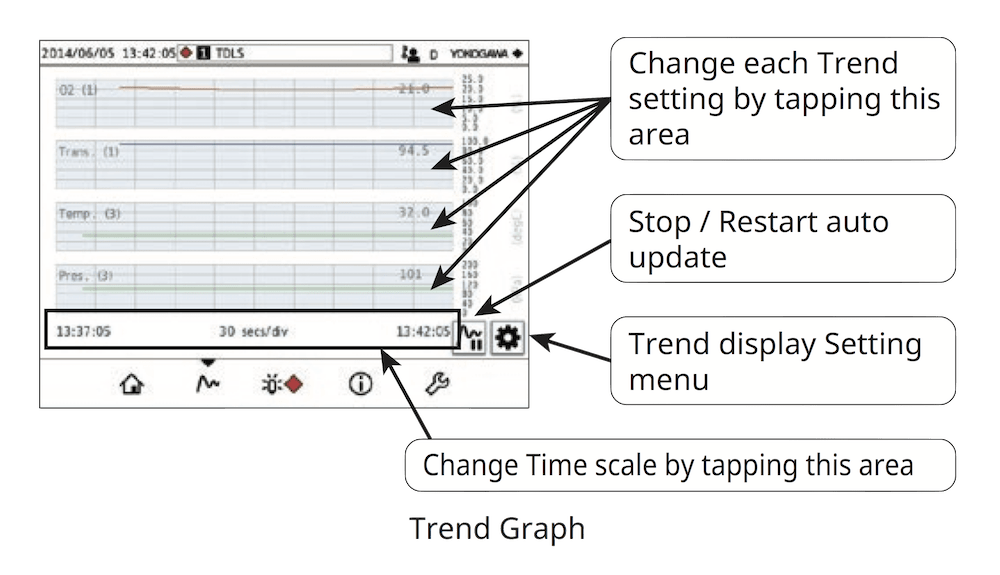
Details
Structural Features
Single flange design reduces total installed cost
- Ideal for smaller fired assets or installation points where clear aperture cannot be achieved
- Reduced overall installed cost for additional nozzles, alignment services, or platform installation
Replacing of existing extractive gas sampling analyzer
- Reduced overall maintenance demand with no consumables and negligible drift (eliminates calibration)
- In-situ measurement removes sample lag time
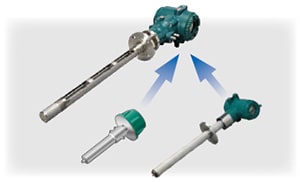

Fired Heater Combustion Safety and Lifecycle Management
 Yokogawa's TDLS combustion measurements provide reliable information to achieve:
Yokogawa's TDLS combustion measurements provide reliable information to achieve:
- An in-situ measurement that removes sample lag time
- A solid-state technology with no consumables, negligible drift (eliminates calibration), and is not an ignition source
- A SIL2 rated measurement output for safety systems with T100 in 2.4 seconds
- A reliable averaging CH4 measurement can ensure startup safety, and CO can be used to reliably control O2 down to CO breakthrough levels
Standard Specifications
| Measurement object | O2, CO, CO/CH4, O2+CO/CH4, NH3, HCl | |||
|---|---|---|---|---|
| Measurement system | Tunable diode laser spectroscopy | |||
| Measured components and range | Measured component | Min. range | Max. range | |
| O2 | 0-1% | 0-25% | ||
| CO(ppm) | 0-200 ppm | 0-10,000 ppm | ||
| CO+CH4 | CO | 0-200 ppm | 0-10,000 ppm | |
| CH4 | 0-5 % | |||
| NH3 | 0-30 ppm | 0-50,000 ppm | ||
| HCl | 0-50 ppm | 0-5,000 ppm | ||
| Probe Length | 0.7m, 1.0m, 1.5m, and 2.0m | |||
|
Output signal |
2 or 5 points (TDLS8100/TDLS8200), 4 to 20 mA DC Output types; Gas 1 concentration, Gas 2 concentration, Gas 3 concentration, Transmission, Process gas temperature, Process gas pressure Output range; 3.0 to 21.6 mA DC |
|||
| Digital communication | HART, Ethernet | |||
|
Contact outputs |
2 points, contact rating 24 V DC, 1 A DO; Function: Activate during Warning / Calibration / Validation / Warm up / Maintenance conditions Fault; Function: Activate during normal condition, not activate during fault condition or when the system power is off |
|||
| Valve control output | 2 points Function; Activate calibration or validation solenoid valves for zero, span or validation gas Output signal; 24 V DC, 500 mA Max. per terminal |
|||
| Alarm | Warning; Gas concentration low/high, Transmission low, Process pressure low/high, Process temperature low/high, Validation required, Validation failure, Zero/Span calibration error, Non process alarm, External alarm Fault; Laser module temperature low/high, Laser temperature low/high, Detector signal high, Peak center out of range, Reference peak height low, Absorption too high, Transmission lost, Reference transmission low, Reference peak height high, Laser unit failure, Laser module error, File access error, E2PROM access error. |
|||
|
Contact inputs |
2 points Function; External alarm/Calibration start/Validation start/Stream switch Contact specification; Zero voltage contact input Input signal; Open signal; 100 kΩ or more, Close signal; 200 Ω or less |
|||
|
Input signal |
2 points, 4 to 24 mA DC Input types; Process gas temperature, Process gas pressure |
|||
| Self-diagnostics | Laser Unit temperature, Sensor Control Unit temperature, Laser temperature, Detector signal level, Memory read/write function, Peak locking condition | |||
| Calibration | Calibration method; Zero/Span calibration Calibration mode; Manual, Auto, Local initiate (HMI) |
|||
| Validation | Validation method; Up to 2 points Validation mode; Manual, Auto, Local initiate (HMI) |
|||
| Power supply | 24 V DC ±10% | |||
| Warm-up time | 5 min. | |||
| Protection degree | IP66, NEMA Type 4X | |||
| Hazardous area classifications | Division 1, Zone 1; Explosion-proof/ Flame-proof type; FM, cFM, ATEX, IECEx (Pending) | |||
| Process gas condition | Process gas temperature: Max 850°C Process gas pressure: 90 to 500 kPa abs. Process gas flow velocity: 1 to 30 m/sec |
|||
| Installation condition | Ambient operating temperature: -20 to +55°C Storage temperature: -30 to +70°C Humidity: 0 to 95%RH at 40°C (non-condensing) |
|||
| Additional Specifications |
Cable entries; 1/2 NPT or M20x1.5mm, one hole and 3/4 NPT or M25x1.5mm, three holes |
|||
Performance
| Measurement gas | Repeatability | Linearity | |
|---|---|---|---|
| O2 | ± 1% reading or ± 0.01% O2, whichever is greater | ± 1% F.S. | |
| CO (ppm) | ± 2% reading or ± 1 ppm CO, whichever is greater | ± 1% F.S. | |
| CO + CH4 | CO | ± 1% reading or ± 1 ppm CO, whichever is greater | ± 2% F.S. |
| CH4 | ± 4% reading or ± 0.02% CH4, whichever is greater | ± 4% F.S. | |
| NH3 | ± 2% reading or ± 1 ppm NH3, whichever is greater | ± 2% F.S. | |
| HCL | ± 1% reading or ± 2.5 ppm H2O, whichever is greater | ± 2% F.S. | |
YH8000 HMI Unit
| Display | Touchscreen 7.5 inch TFT color LCD panel, 640 x 480 (VGA) |
|---|---|
| Communication | Ethernet; RJ-45 connector, Communication speed; 100 Mbps |
| Protection degree of enclosure |
IP65, NEMA Type 4X |
| Weight | 4 kg |
| Mounting | Analyzer mount (Front, left-side, right-side) with tilt function, Pipe mount or Panel mount |
| Cable Entries | 1/2NPT or M20 x 2 |
| Installation conditions |
Ambient operating temperature; -20 to 55℃ Storage temperature: -30 to 70℃ Humidity: 10 to 90%RH at 40℃ (Noncondensing) |
| Power Supply | 24 V DC ±10% |
| Hazardous area classifications |
Division 2, Zone2: Non-Incendive/Type n; FM, cFM, ATEX, IECEx |
Resources
Yokogawa’s Tunable Diode Laser Spectroscopy (TDLS) is the ideal solution for both oxygen and carbon monoxide measurements in process furnaces that have aggressive and corrosive components.
O2 measurement is used to safely recover flue gas containing a high concentration of CO from a converter furnace. With conventional paramagnetic oxygen analyzers, O2 concentrations are obtained through a sampling system to recovery flue gas. Therefore, there are problems with the maintenance and running costs of the sampling system, and time delays in measurement.
In this eBook we explain how to improve fired heaters safety & efficiency by controlling combustion using TDLS technology. Download it now and learn:
- The 4 top industry challenges related to fired heaters
- How to efficiently and safely manage combustion
- How TDLS technology can improve operational excellence in fired heaters
Protect Plants from Process Perils, Up Your Fired Heater Safety with TDLS Technology - Chemical Processing - eHandbook April 2022
Hydrocarbon Processing article discussing tunable diode laser (TDLS) gas analysis for combustion management in fired heaters | June 2015.
Downloads
Brochures
Instruction Manuals
General Specifications
Technical Information
- TDLS8100/8200 Probe Sampling (527 KB)
Engineering Tools
- TDLS8100 Standard Drawings (359 KB)
- TDLS8100 Customer Maintenance Parts List (332 KB)
- TDLS8200 Standard Drawings (311 KB)
- TDLS8200 Customer Maintenance Parts List (297 KB)
Forms
- TDLS Application Datasheet (6.3 MB)
Videos
TDLS8100 & TDLS8200 Features and Benefits Video
The TDLS8200 Probe Type is the newest addition to Yokogawa’s Tunable Diode Laser Spectrometer product lineup. Now with the ability to measure O2, CO, and CH4 with a single device and from a single installation point. The developers talk about it.
Fired heaters are the largest energy consumer in the manufacturing sector and represent a tremendous opportunity for energy savings. However, energy efficiency is not the only concern for fired heaters. Compliance and safety are continuous challenges.
In this one-hour presentation, we will discuss:
- How to improve fired heater safety and efficiency by controlling combustion using Tunable Diode Laser Spectrometers (TDLS) technology
- The 4 top industry challenges related to fired heaters
- How to efficiently and safely manage combustion
- How TDLS technology can improve operational excellence in fired heaters
News
-
Press Release Jul 21, 2022 Yokogawa Adds Explosion-Proof Version of TDLS8200 Probe Type Tunable Diode Laser Spectrometer to OpreX Analyzer Lineup
-
Press Release May 4, 2020 Yokogawa Real Time Gas Analyzer Breakthrough Design Drastically Reduces CAPEX and OPEX in Industrial Process Heating Installations
-
Press Release Jan 22, 2019 Yokogawa Adds TDLS8100 Probe Type Tunable Diode Laser Spectrometer to Its OpreX Analyzer Lineup
- Costs less to install and ensures safe and energy-efficient operations -
Looking for more information on our people, technology and solutions?
Contact Us